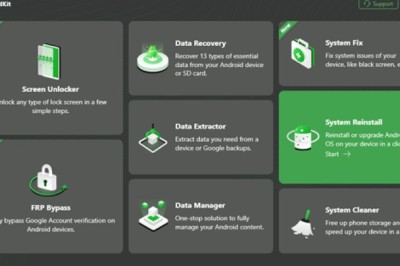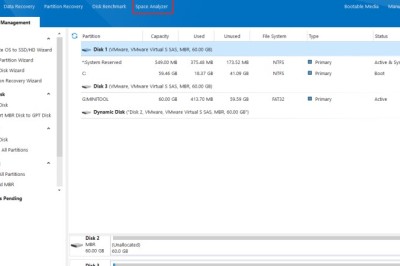views

Managing high caseloads is a common challenge across many professions, and the pressure of handling numerous tasks simultaneously can lead to stress, decreased productivity, and burnout. When you're overwhelmed by the sheer volume of responsibilities, it's easy to feel like you're constantly playing catch-up — negatively impacting your work quality and personal well-being.
Effective prioritization and time management are essential in navigating these challenges. Strategically organizing your tasks and managing your time will help you enhance productivity, reduce stress, and achieve a better work-life balance.
Prioritization helps you focus on the most critical tasks first and ensure you meet deadlines while maintaining high standards. Meanwhile, time management techniques enable you to allocate your time efficiently, so you can handle your workload without sacrificing your personal life.
This article provides you with practical prioritization methods and time management techniques to help you handle high caseloads more effectively. These strategies will enable you to manage your responsibilities with greater ease and maintain a healthier, more balanced approach to your work.
Prioritization Methods
When faced with a high caseload, effective prioritization is crucial for managing tasks efficiently and reducing stress. Various methods can help you determine which tasks need your immediate attention and which can be scheduled for later. Here are some prioritization techniques you can try:
A. Eisenhower matrix
Also known as the Urgent-Important Matrix, it is a method of organizing tasks by urgency and importance. To create the matrix, draw a square and divide it into four quadrants. Assign the following labels to the quadrants: urgent and important, not urgent but important, urgent but not important, and neither urgent nor important. By categorizing tasks into these quadrants, you can focus on high-priority tasks and minimize distractions from less critical activities.
B. ABC analysis
ABC Analysis is another prioritization method that helps categorize tasks based on their importance. In this method, tasks are divided into three categories: A, B, and C. 'A' tasks are the most critical and must be done first, 'B' tasks are important but less critical, and 'C' tasks are the least important. This method helps you allocate your time and resources more effectively by focusing on the tasks that have the most significant impact on your goals.
C. Urgency and impact prioritization
Urgency and Impact Prioritization involves assessing tasks based on their urgency and the impact they have on your objectives. Urgency refers to the time-sensitivity of a task, while impact measures the importance or value of completing the task.
To use this method, list your tasks and rate each one based on its urgency and impact. Prioritize tasks with high urgency and high impact first, followed by those with high impact but lower urgency. This approach ensures that you are focusing on tasks that drive the most value and progress.
Time Management Techniques
Managing your time effectively is essential when dealing with high caseloads. By organizing your tasks and structuring your day, you can increase productivity and reduce stress. Below are three key time management techniques to follow:
A. Calendars and scheduling
A well-kept calendar helps you efficiently keep track of deadlines, appointments, and important events. Techniques for effective scheduling include setting aside specific times for particular tasks, prioritizing high-impact activities, and leaving buffer times for unexpected interruptions. Balancing flexibility with structure is crucial; while a rigid schedule can lead to burnout. Having some flexibility allows you to adapt to changes and maintain a steady workflow.
B. To-Do lists
There are different types of to-do lists you can use, such as daily, weekly, and project-based lists. Best practices for creating and maintaining to-do lists include breaking down tasks into smaller steps, regularly updating your lists, and reviewing them at the end of each day or week to track progress. Various tools and apps — like Trello, Todoist, and Microsoft To-Do — can help you manage these lists effectively, ensuring that nothing falls through the cracks.
C. Time-blocking
This practice involves dedicating specific blocks of time to particular tasks. To implement time-blocking in your daily routine, start by identifying your most important tasks and assigning them dedicated time slots on your calendar.
For example, you might block out two hours in the morning for focused work, followed by an hour for meetings, and another block in the afternoon for administrative tasks. This method helps you stay focused and allows for better time tracking, especially when working remotely, ensuring you remain productive wherever you are.
Increasing Your Efficiency
To handle high caseloads more efficiently, it's essential to optimize how you approach your work. Leveraging your strengths, minimizing distractions, and using the right business tools for streamlining workflows can significantly enhance your productivity and help you better manage your workload.
Delegating tasks is a critical strategy for managing a high volume of work. Start by identifying tasks that can be delegated, which are typically those that others can handle with minimal guidance.
Effective delegation involves choosing the right person for the task, clearly communicating expectations, and providing the necessary resources and support. It's also important to follow up regularly to ensure the task is on track and to offer assistance as needed.
Eliminating distractions is another key factor in boosting efficiency. Common sources of distraction include phone notifications, social media, and unplanned interruptions.
Techniques to minimize these distractions include setting specific times to check emails and messages, using apps that block distracting websites, and creating a dedicated workspace. By creating an environment conducive to concentration, you can maintain a higher level of productivity throughout the day.
Using productivity tools can also greatly enhance your efficiency. Platforms like Trello, Asana, and Slack offer various features to help you organize tasks, collaborate with team members, and streamline communication. These tools for productivity allow you to visualize your workload, set deadlines, and track progress to ensure that everyone is on the same page.
Conclusion
Managing high caseloads effectively involves a combination of prioritization and time management techniques. Implementing the practices outlined above can help you manage your workload more efficiently, reduce stress, and improve your overall productivity. Prioritization and time management are crucial not only for professional success but also for maintaining personal well-being. By adopting these strategies, you can achieve a balanced approach to your work, leading to better outcomes and a healthier work-life balance.

























Comments
0 comment